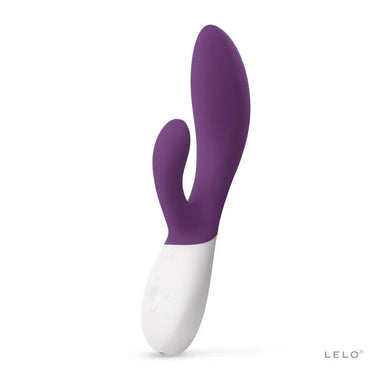Kegel Exercisers Guide
Kegel exercises won't make you look better, but they may strengthen the muscle that supports the bladder. This exercise was developed in the late 1940s by an American gynecologist to prevent women from leaking urine in a non-surgical way. According to NIH, the ratio of women affected by pelvic-floor problems is 4:1, but only a third of men and women performing the exercise benefit from the exercise.
Kegel is also called pelvic-floor exercise. It involves repeated relaxing and contracting the muscle that forms part of the pelvic floor. The exercise may take one to three months to give results and must be performed daily, several minutes at a time. The weakening of the pelvic floor may occur after childbirth or as a result of aging. Therefore, the exercise can help increase the intensity and duration of orgasm. The pelvic floor makes a bowl as it connects from the public bone in the front to the tailbone at the back and outside the hips.
If you want to determine whether you are experiencing pelvic floor weakness, it is recommended to try the "pee test." Try stopping the urine flow as you squeeze your muscle when peeing. If the flow does not stop, it is a sign that you have a weak muscle, hence a reason for Kegel exercises. However, before enrolling in the exercise, ensure you have talked with your physical therapist or doctor because the exercise may cause more harm than good if performed incorrectly. If your muscle is tight, Kegel can lead to various problems like bowel and urinary issues, pelvic pain, and poor sexual functioning.
Types of Kegel Exercisers
Elvie Kegel Exercise
Chapman (2011) explained that this is the best exerciser to start with if you are new to the game. You need to have a device with biofeedback technology or a sensor to know how well you are doing the Kegel. This type has a comfortable fit and a compact, sleek looking. It features an app that connects to your phone for home use. The app can detect and visualize what is going on internally, motivating you to see the results. It can be used anywhere, including the bathroom, since it is waterproof and can withstand water splash. The exercise trainer comes with a guide to 6 unique workouts for strengthening different muscles at four different intensity levels; beginner, training, intermediate and advanced.
Kogal Smartphone Connected Exerciser
It is a squeezable silicone pillow inserted into the vagina. Kanning et al. (2020) explained that it delivers real-time biofeedback to your smartphone, like the Elvie trainer, which helps you know if you are doing it correctly. It allows you to calculate the regimen since it tracks your performance and progress over time. The biggest difference between this and the Elvie is that its pillow is designed and can fit inside the user's vagina. All you need to do is insert it when deflated and then inflate it to fit your unique size and shape.
Yarlap Exerciser
Some devices use electrostimulation to make your muscles contract independently, unlike the traditional Kegel exercises where you need to squeeze and release manually. The electro-stimulating Yarlap is the best as it helps people see results easily and quickly from the training program. It comes with six different workouts that you can set their contraction duration and intensity to suit your desire and needs.
Intimina Kegelsmart Exercisers
These are user-friendly exercisers with no app-enabled functionality. All you need is to insert them after selecting the perfect settings and use their vibration to guide you. Their gentle vibration lets you know when to release or squeeze them. You need to contract your muscles and rest when the exercisers stop vibrating. The device automatically adjusts the intensity level as you proceed with your Kegel exercise.
Intimate Rose Kegel Weight Exercisers
If you need to tighten your pelvic floor muscles, these weight exercisers can be much beneficial to you as they will increase the functioning and coordination of the pelvic muscle. El‐Shami et al. (2020) explained that these exercises are designed to complement traditional manual ones. They have balls, making it easier for a more effective workout in less time by adding extra resistance. All you need for effective results is to use the weight for one minute, two or three times a day.
Step-By-Step Guide to Performing Kegel Exercises

Locate Your Pelvic Muscles
Several techniques can be used to find the right exercises in men and women.
Men
- Pretend you are trying to avoid passing gas.
- Try to stop your urine stream while urinating. Once you have identified the right muscle, you will start feeling more contraction in the back of the pelvic area than in the front.
Women
- Pretend you are trying to avoid passing gas.
- Pretend to tighten your vagina around a tampon.
When you want to practice contraction, all you need is:
- Choosing your position. Begin by lying on your back until you feel contracting the pelvic floor muscle. Practice while standing or sitting.
- Contract and relax. Contract your pelvic muscle for 3-5 seconds and relax them for another 3-5 seconds
- Repeat the process 10 times.
- Keep other muscles relaxed. It would help if you did not contract your legs, abdominal, or even buttock muscles. It would help if you did not also lift your pelvis during the process. You need to gently place a hand on your belly to detect unwanted abdominal action.
- Gradually increase the relaxation and contraction duration as you work up to 10 sec.
Factors to Consider When Acquiring a Kegel Exerciser
Buy A High-Quality Material
Good Kegel exerciser should be made from medical-grade and body-safe material. Ensure the material is skin-friendly to avoid bruising the delicate vaginal muscles. You should also include a high-quality sex lubricant on your list for smooth insertion and removal of devices.
Check the Price
Are you looking for something affordable yet functional? You can shop around for quality exercisers sold at a friendly price. However, remember that cheap products are mostly low-quality materials and have low-performing features.
Frequently Asked Questions about Kegels
Is there any wrong way to do Kegels?
Grant et al. (2019) explained that if you do not do your Kegel exercises well, you may not get the benefits that you would like to get from your Kegel exercises. You may think you are improving your body, yet you'd be causing more damage by doing Kegels incorrectly. The correct Kegel exercise does not involve contracting the abdomen, thighs, and buttocks. Kegel exercises target the pelvic muscles only, which you should also focus on. You should sit and squeeze and lift the anus, vagina, and urethra while relaxing the body. The trick is to sit upright and imagine that you are picking something with your genitals. Take time to know exactly how Kegel exercises are done so that you may gain the most from them. You can watch online video tutorials about Kegel exercises, but if you are still puzzled about how to do Kegels, you should consult your doctor.
Being in the wrong form
Some people strain their pelvic muscles as if they are about to have a bowel movement. Doing this is not harmless, and instead of strengthening your pelvic muscles, you can end up damaging them. Contracting the muscles inwards and upwards would be best to get the best results. You need to feel as if you are stopping urine or holding gas.
Monotony
Hwang et al. (2019) explained that the pelvic muscles have two types of muscle fibers that both need to be strengthened. Your routine exercises should therefore have more exercises and not Kegel exercises only.
Wrong Routine
It would be advisable if you did not do the same daily exercise with the same difficulty. The intensity of the exercises should increase as you progress. You should not under-exercise, and you should also not over-exercise. If your routines cause you any pain, you should consult your doctor.
Inconsistency
You should make sure that you work out your pelvic muscles every day. If you have a routine, you must stick with it without fail. Set aside some time every day to achieve the best results. Inconsistency usually leads to failure. If you do not follow a routine strictly, at some point, you will relax for too long, and in the end, you will stop. Doing the exercise altogether.
Giving Up Too Soon
Most exercises take 12 weeks to see results, and Kegels are no different. You should not expect any change within the first days, but when you notice the change, you should not stop. It would be best to adopt pelvic exercises into your lifestyle.
What if I need more help?
If you need more help, you may watch tutorials about how to do it, but the best thing to do would be to see your doctor so that you do not Kegel exercises in a way that may cause you more harm than good.
How do I know if my Kegels are working?
You will know that your Kegels are working if the symptoms of whatever you wanted to correct are not as bad as they were when you started working out. That means that if you were suffering from incontinence, you could control your urine flow better, or if your vagina felt lost, you could now feel the tightness. The improvements are the sign you need to know that your Kegel exercises are working.
How long before I see the results of Kegels?
It takes 12 weeks to see the results with most exercises, and it's no different with Kegel. But the results of any exercise will always depend on how consistent and regular you have been with the exercises.
How do I know that I need Kegels?
Many issues can weaken your pelvic muscles, such as childbirth, pregnancy, surgery, and too much straining from coughing, constipation, and being overweight. The Kegels are meant for you if you suffer from mild urine or fecal incontinence. It is important to note that Kegel exercises are not useful for people living with serious incontinence problems.
How often should I do Kegels?
The number of times you should do your Kegel exercise depends on whether you've been doing them or are a beginner. If you are a beginner, you need to do the Kegels less often than a person who has been doing them, although you should keep adding the frequency gradually. The frequency should be at least 10-20 times a day, then eventually 10-20 times a day. The best deal about Kegels is that you can do them anywhere. However, it is important to note that you should not do them too frequently. Overdoing Kegel exercises will have negative effects on you. The muscles you want to tighten will loosen because of exhaustion.
Can I do Kegels after a C-section?
The best way to engage the abdominal muscles is to do Kegels. Kegels can be done as soon as the catheter is out of the cesarean section. However, you'll need to start gradually and move on to more advanced routines. The key to getting successful results with your Kegels are consistency and frequency. Do not do Kegels after the C-section without consulting your doctor.
Are there any risks to Kegels?
Hallaj (2014) explained that kegel exercises are safe and harmless, depending on how you do them. Kegel is only harmful if not done in moderation. You may want to have quick and hence over-exercise your pelvic muscles. But Kegel exercises are supposed to be gradual. Overdoing the exercise will not give you quick results. They will cause more damage to the pelvic muscles. Doing Kegels when you have vaginismus, bladder dysfunction, and constipation can also worsen the problems. Kegels exercises when urinating in which the person stops then re-starts the stream can also cause Urinary Tract Infections. This method can also cause problems when emptying your bladder and issues with your kidneys. It can also lead to the weakening of the urethra. Kegel exercise is safe if you do not have other pre-existing conditions.
Conclusion
Kegel exercise involves repeatedly relaxing and contracting the muscle that forms part of the pelvic floor. This set of exercises can improve your vaginal endurance and sex life. If you want the best devices to revive your weak pelvic muscles and help you switch back to pleasurable sex, include the above Kegel exercisers in your bedroom collection today.
References
Chapman, J. (2011). O-shOt?.
El‐Shami, K., Oeffinger, K. C., Erb, N. L., Willis, A., Bretsch, J. K., Pratt‐Chapman, M. L., ... & Cowens‐Alvarado, R. L. (2015). American Cancer Society colorectal cancer survivorship care guidelines. CA: a cancer journal for clinicians, 65(6), 427-455.
Grant, A., Dean, S., Hay-Smith, J., Hagen, S., McClurg, D., Taylor, A., ... & Bugge, C. (2019). Effectiveness and cost-effectiveness randomized controlled trial of basic versus biofeedback-mediated intensive pelvic floor muscle training for female stress or mixed urinary incontinence: protocol for the opal (optimizing pelvic floor exercises to achieve long-term benefits) trial mixed-methods longitudinal qualitative case study and process evaluation. BMJ Open, 9(2), e024152.
Hallaj, F. A. (2014). Effect of Kegel Exercise on Urinary Incontinence among Institutionalized Elderly in Lattakia, Syria. Alexandria Scientific Nursing Journal, 16(2), 25-38.
Hwang, U. J., Lee, M. S., Jung, S. H., Ahn, S. H., & Kwon, O. Y. (2019). Pelvic floor muscle parameters affect sexual function after 8 weeks of transcutaneous electrical stimulation in women with stress urinary incontinence. Sexual Medicine, 7(4), 505-513.
Kanning, M., Do, B., Mason, T. B., Belcher, B. R., Yang, C. H., & Dunton, G. F. (2020). Doing exercise or sport with one's child is positively associated with mothers' momentary effect in daily life, but not with higher levels of overall physical activity. BMC Public Health, 20(1), 1-10.




































